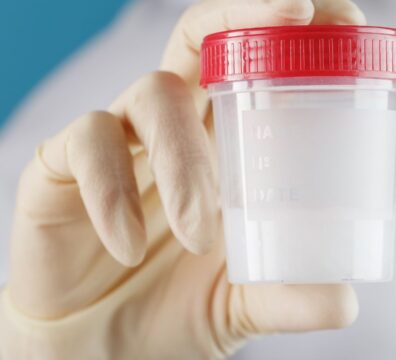What Every Man Should Know About Semen Analysis (Spermiogram)
If you’re planning to become a dad, chances are you’ve already heard about semen analysis—also known as a spermiogram. But what exactly does it involve? And what do all those numbers and terms really mean?
Let’s break it down in a way that makes sense — no science degree required.
What Is a Semen Analysis?
A semen analysis is the most common test to evaluate male fertility. It looks at a number of key characteristics in a man’s ejaculate to see how capable the sperm are of reaching and fertilizing an egg.
This test is done in a certified lab, usually after 2–7 days of sexual abstinence. You’ll provide a sample through masturbation into a sterile container, and the lab will analyze it within an hour for best accuracy.
What are Key Parameters of a Semen Analysis?
Here are the main things the lab will look at:
- Semen Volume
- Normal: ≥1.4 mL (WHO 2021)
- Too low? That could indicate issues with the seminal vesicles or blockages.
- Sperm Concentration
- Normal: ≥16 million sperm/mL
- Fewer sperm doesn’t always mean infertility—but it’s worth investigating.
- Motility (Movement):
- Total Motility (all moving sperm): ≥42%
- Progressive Motility (sperm that swim forward): ≥30%
- Without good movement, sperm might not reach the egg.
- Morphology (Shape)
- The percentage of sperm that look “normal” under a microscope. WHO doesn’t define a fixed limit here, but many labs use ≥4% normal forms as a benchmark.
- Vitality
- Tells whether sperm are alive. Particularly important if motility is low.
Optional extended tests may also look at:
- DNA fragmentation
- Leukocytes (infection markers)
- Oxidative stress
- Antibodies that attack sperm
What Do the Results Mean?
Even if one or more values are below reference levels, that doesn’t necessarily mean you’re infertile. In fact, up to 5% of men with “suboptimal” values can still father a child naturally.
At the same time, the reverse is also true: even if semen quality appears normal on paper, the analysis doesn’t tell the whole story. Everyday factors such as stress, smoking, poor nutrition, and lack of sleep can profoundly impact sperm health and reproductive potential over time.
Think of semen analysis as a snapshot — useful, but not the final verdict. Real reproductive health depends not only on numbers, but also on lifestyle and long-term care.
Sperm Are Always in Production
Here’s some great news: Sperm regenerate constantly.
It takes about 2–3 months for new sperm to develop. That means:
- Today’s test doesn’t define your future.
- There’s a lot you can do to boost your sperm health for the next round.
What Can You Do to Improve Your Sperm Quality?
No matter what your semen analysis shows, there are three important steps every aspiring father can take:
- See a Doctor
- Especially a urologist or fertility specialist
- Rule out infections, hormonal issues, or other treatable conditions
- Adopt a Healthy Lifestyle
- Eat a balanced, antioxidant-rich diet 🥦
- Maintain a healthy weight
- Avoid smoking, excess alcohol, and heat exposure (hot tubs, laptops on lap)
- Exercise regularly — but not excessively
- Make sure you get enough rest
- Support Fertility with Targeted Supplements
- Products like Fertilovit® Mplus or Fertilovit® MT are specially developed to nourish sperm health with zinc, selenium, CoQ10, folate, L-carnitine, and antioxidants.
- These nutrients can help improve sperm motility, concentration, and morphology over time.
Final Thought
Taking the first step to check your fertility is already a big win. It’s not about perfection — it’s about understanding your body and making proactive, smart choices.
👉 Sperm quality can change. And with the right care and support, you can make a big difference in just a few months.
FAQ: What Every Man Should Know About Semen Analysis
Does a normal semen analysis mean I’m fertile?
Not necessarily. A semen analysis shows whether your sperm meet certain reference values, but it doesn’t capture everything. Lifestyle factors like stress, smoking, poor diet, or lack of sleep can still harm sperm health even when numbers look normal.
Can I still be fertile if my semen analysis looks abnormal?
Yes. Many men with values below reference ranges are still able to father children naturally. A semen analysis is a useful snapshot, but it’s not a final verdict on your fertility.
How often should I repeat a semen analysis?
Because sperm take about 2–3 months to regenerate, most doctors recommend at least two tests, spaced a few weeks apart, to confirm results. Lifestyle changes or medical treatment may improve outcomes in the next round.
What affects sperm quality the most?
Key influences include smoking, alcohol, poor diet, obesity, heat exposure (like saunas, laptops on laps), stress, and lack of sleep. Micronutrient deficiencies also play a role.
Can supplements really improve sperm quality?
Yes. Clinical studies show that targeted micronutrients such as zinc, selenium, folate, CoQ10, L-carnitine, and antioxidants can help support sperm motility, concentration, and morphology over time. Products like Fertilovit® Mplus or Fertilovit® MT are designed specifically for this purpose.
How long does it take to improve sperm health?
Since sperm mature in about 2–3 months, improvements from lifestyle changes or supplements usually become visible after this period. Consistency is key.
What’s the next step if my results are worrying?
See a urologist or fertility specialist. They can check for infections, hormonal imbalances, or other conditions, and guide you on lifestyle changes or treatment options.
References:
Mehmet Erhan Aydın, Özgür Özbek, Tevfik Çetin, Mustafa Sungur, Coşkun Kaya, Aykut Aykaç. The impact of the new 2021 reference limits of the World Health Organization criteria for semen analyses. Journal of Men’s Health 2024 vol.20(6), 21-24
WHO laboratory manual for the examination and processing of human semen. Sixth Edition: https://iris.who.int/bitstream/handle/10665/343208/9789240030787-eng.pdf?sequence=1

